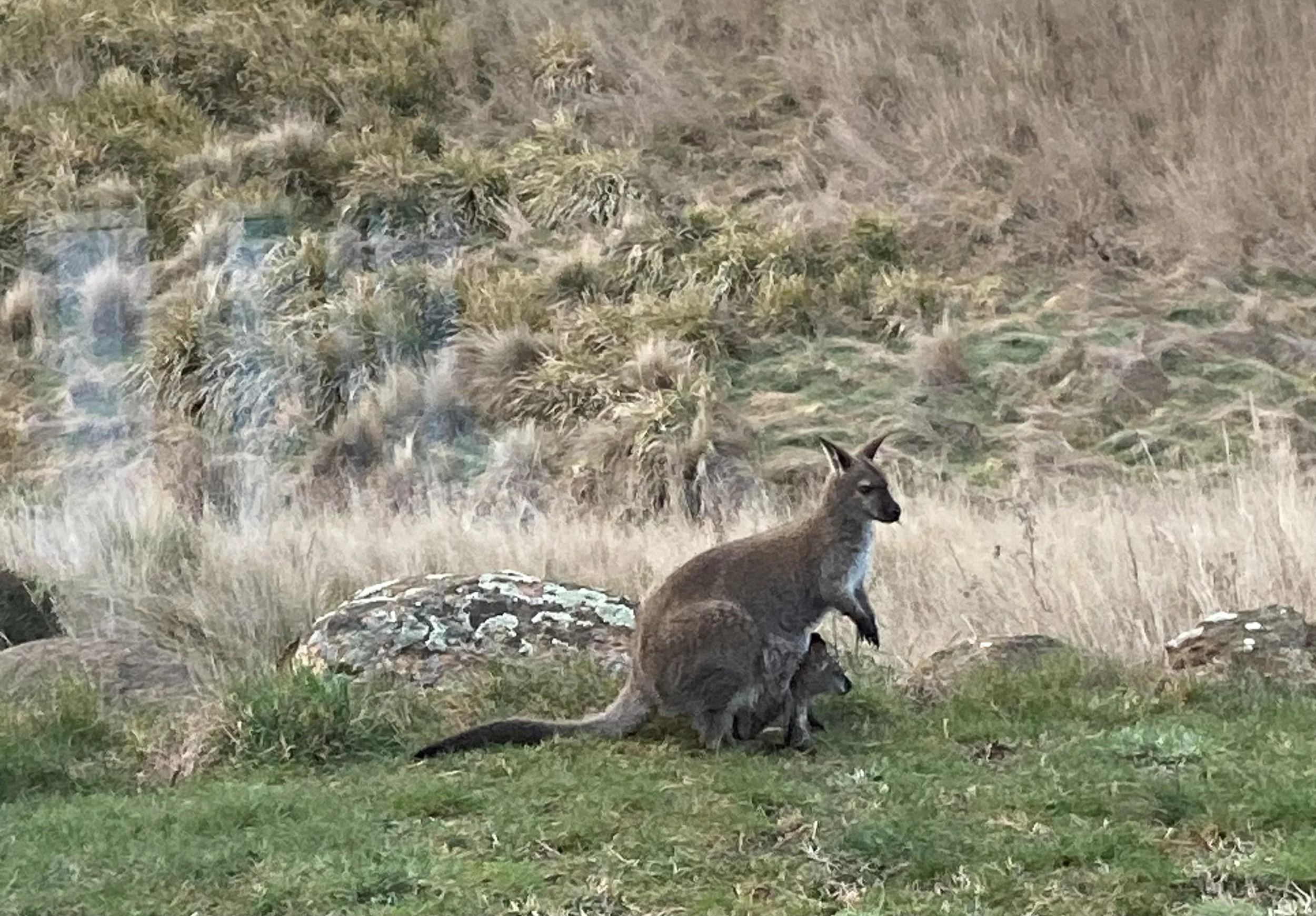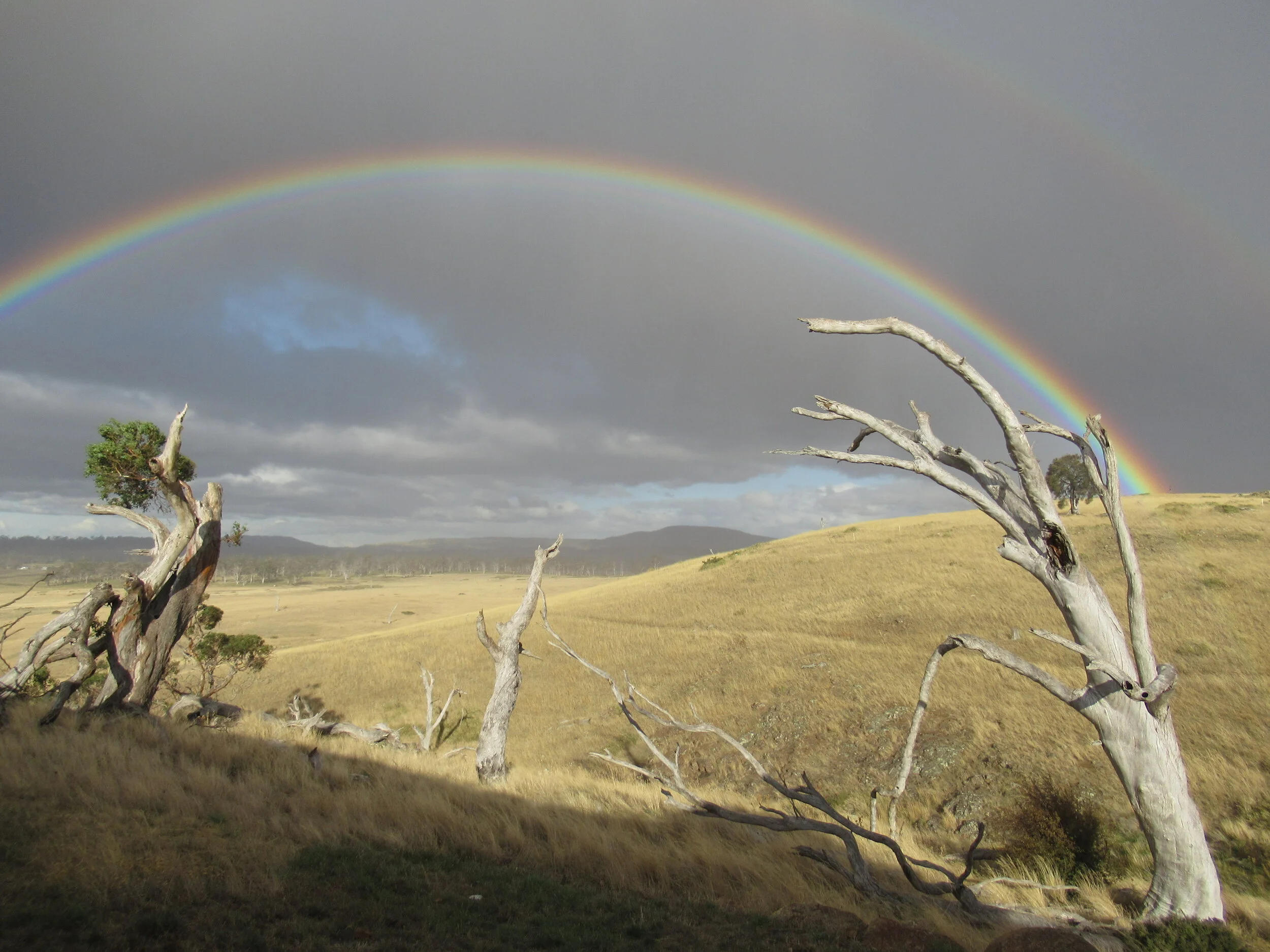Three exhilarating, exhausting, educational days with Pip Courtney and her film crew and we have captured the main elements of a Landline segment on White Gum Wool, ten years on from the first one. Lots of laughter, a few tears and so much fun being part of making a film!
Enhancing Biodiversity 2: Grazing
Why is there an image of a humpback whale’s ‘bubble net’ at the beginning of this article? Well, it’s a story about grazing and biodiversity, and such a cool one that I couldn’t resist using it as the lead-in. The image captures the line of bubbles the whale leaves as he creates an acoustic net to trap small fish and then scoop them up.
Coming back to solid ground, grazing in farmland and bush is, like chocolate and carbon dioxide, a good thing in moderation. Grazing helps more sensitive plants that might not be able to compete with the most robust plants in the system (e.g. cocksfoot grass, silver tussock native grass) by opening up the plant canopy to allow sunshine in for photosynthesis.
Biodiversity and Nutrition
Biodiversity is not just a pretty face. It’s critical for nutrition for animals of all descriptions, including us.
All plants have developed chemical defences to keep from being overeaten. Known as secondary compounds, these are sophisticated chemicals like tannins and alkaloids. Oregano, for instance, a common culinary herb, boasts 26 different secondary compounds.
Secondary compounds do a couple of key things for us mammals. First, they limit how much we want to eat of a given plant, by making us faintly nauseous if we eat (or drink) too much of it. Think of the way your tummy feels after the 4th cup of tea or coffee, even SGC (seriously good coffee).
Biodiversity
A note to my Yarns from the Farm Readers—I’ve started another series for our local newspaper on biodiversity. This is the first instalment. Nan
Through no fault of its own, the term biodiversity has become either a mantra or a swear word, depending on which side of the divide between development (including agriculture) and conservation you inhabit.
Shepherding Final Exam
For at least a couple of years, I’ve been convinced that my flock is locally adapted to their home. The term “locally adapted” is not just rhetoric, it has a specific meaning in the context of animal behaviour. Locally adapted animals know how to thrive in their environment—where to find shelter, water, and the plants they need to stay healthy.
Nourishment: Fred Provenza's new book
Fred Provenza’s much-anticipated new book, Nourishment: What Animals Can Teach Us About Rediscovering Our Nutritional Wisdom will be launched next week. Long-time readers of Yarns from the Farm will recognise Fred’s name as the mentor who, along with Alice the sheep, taught me all I know about the interactions between plant and animal grazing behaviours.
“In this magnificent book…Provenza weaves together philosophy, nutritional science, memoir, and his humble appreciation for the natural world into an inspiring meditation on our moment on Earth.”
—Courtney White, author of Grass, Soil, Hope
Sheep Crocodiles
For those of you who don't speak British Commonwealth idiomatic English, a crocodile can also mean a line of school children. The relevance of this term to the real topic of this Yarn will become clear later. (If you are one of those who read the last chapter first, skip to the video at the very end of the Yarn.) The real topic of this yarn is "Do sheep work?" More specifically, do my sheep consciously choose to cooperate in the work of the farm?
Animal Wifery
We've had 3 ½ inches of rain in May (hooray!) and the property is looking better than it has in months. Admittedly, it looks better from a distance than at worm's-eye level, where there is too much bare ground showing. However, the lovely spring green look is most welcome, along with the beginnings of run-off.
Come Shepherding
Come Shepherding is a new initiative I’ve started, designed to give readers a more personal experience of shepherding, White Gum Wool style. Each time I do a shepherding circuit, I first post the map and plan for the day on the Come Shepherding blog, then provide a few photos via Instagram as I’m shepherding. At the end of the day, I write up my notes and add them and the photos to the Come Shepherding post for the day.
Six Impossible Things
As often happens to me, I mis-remembered this quotation. I thought it was about doing six impossible things before breakfast, thereby revealing my lamentable tendency to jump into things with all four feet without due consideration of the consequences. Believing six impossible things is a lot harder, I think.
Fire and Ice
Epiphany
Not the religious sort, more the “uh, duh” sort. Wikipedia describes this kind of epiphany as “an enlightening realisation that allows a problem or situation to be understood from a new and deeper perspective”. Sounds better than “uh, duh”, huh? It started a few months ago, though I didn’t recognise it for the turning point it has turned out to be.
The warfare between the sheep and the rose
In his 1943 classic “The Little Prince” Antoine de Saint-Exupery wrote (more poetically in French, mind you): "The flowers have been growing thorns for millions of years. For millions of years the sheep have been eating them just the same. And is it not a matter of consequence to try to understand why the flowers go to so much trouble to grow thorns which are never of any use to them?
The Power of the Matriarch
Had I any idea of the pivotal role she would play in my life, I would have given my lead ewe a better name. Boadicea, for instance. Or maybe Elizabeth. Or even Frances Darlene after my difficult and undeniably contrary mother. But at the time I saved her from the usual fate of 5 year-olds on most sheep properties, I only knew that she was a pretty good leader, at least at times. So she became simply “Old Leader”.
The Bed of a Jedd
From my all-time favourite Dr Seuss, The Sleep Book, comes the following character:
A Jedd is in bed, and the bed of a Jedd
Is the softest of beds in the world it is said.
He makes it from pompoms he grows on his head.
And he’s sleeping right now, on the softest of fluff,
Completely exhausted from growing the stuff.
The softest of fluff—and unlike the Jedd, there’s just a bit more to it than piling up the pompoms to sleep on. In honour of all the knitters who’ve recently subscribed to Yarns, I thought I might tell you the little bit I know about how to go from pompoms to knitting wool.




















